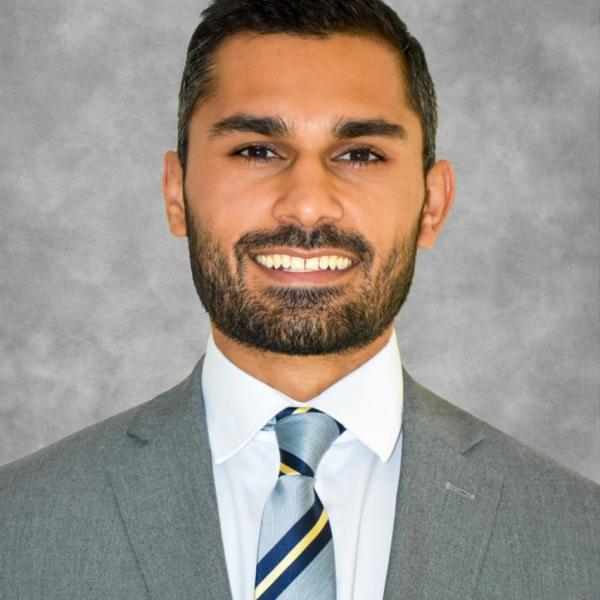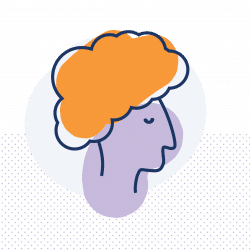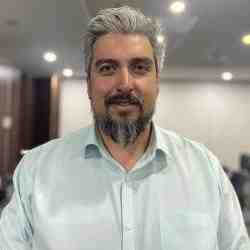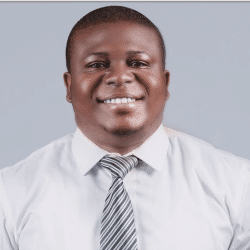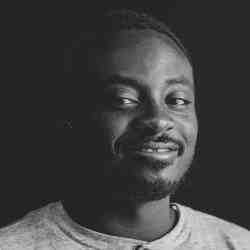Introduction
Everyone across all socio-economic groups should have access to legal knowledge and services. Armin makes this possible by harnessing the untapped power of young people, reimagining high school legal education, establishing legal aid clinics at community schools, and transforming the pathways into the legal profession.
The New Idea
During his third year at the University of Houston Law Center, Armin Salek served as a volunteer law instructor at two high schools serving predominantly minority and low-income communities. He also volunteered at the Lone Star Legal Aid clinic supporting tenants in housing matters and at the University of Houston Immigration Clinic as a student attorney. In the first role he was blown away by his students “commentary on criminal justice issues, valuable personal insights on family law, and easy grasp of complex constitutional and business law topics.” In the latter roles, he was struck by how often the predominately white legal profession was stunted by their lack of language skills and cultural context. He was taken aback by the unequal access to legal knowledge and power across socio-economic lines.
Then Armin had an epiphany. He realized that he might be able to tap into the talents of students like those he taught to help legal literacy, knowledge, and power flow more equitably between the law profession and low-income, majority-minority communities. In 2017 he earned his teaching certificate while awaiting the results of his bar exam and was licensed as an attorney and certified as a teacher in the same week. He then took a teaching job and he and a group of students from Akins High School in Austin, Texas established the first high school legal aid clinic in the country. Over the next couple of years, they brought over $100,000 worth of free and transformative legal support to their community.
Armin’s instincts were correct. He has proven that it is possible to take talented, bilingual, and diverse students from underrepresented communities and equip them with the tools to pursue legal careers while tapping into their language skills and cultural capital to serve their neighbors. Through this process of using the law to help young people find and share their power, young people can effectively address the legal issues facing their families, friends, and neighbors, while setting many on a path towards careers in the law, thus transforming the profession.
Armin is no longer in the front of the classroom, supervising that first legal clinic, or coaching the Aikin’s Mock Trial team. Today he leads the non-profit he founded – the Youth Justice Alliance – as the vehicle to spread this model first around Texas and then around the country. Towards that goal, Armin supports high school teachers and law students around the state through curriculum guidance, sharing his past content, and designing opportunities to make class more engaging. He’s also working formal channels to get a full-fledged curriculum approved as core curriculum for all Texas public schools by the 2023-2024 school year. Already his model of school-sponsored, attorney-supervised legal clinics staffed by high school students and benefiting their communities is taking root. Within ten years, he envisions school attorneys and legal clinics like this being as ubiquitous as school counselors and – in the process – he will inspire countless young people from underrepresented backgrounds to pursue legal careers, transforming the demographics of that profession for good.
The Problem
Despite the fact that law shapes much of our lives, the legal landscape is hard for many to navigate and widespread legal literacy is low. In terms of formal education, most people will experience no more than the occasional “Know Your Rights” campaign. Even when secondary schools do provide law courses or where high school Mock Trial teams exist, the content of these courses and mock cases almost exclusively focuses on criminal law. The emphasis seems to be more about entertaining students than actually equipping them with knowledge of laws and how they shape our lives. As a result, legal literacy is low across the board.
One might argue that “how-to-fix-your-car literacy” or “computer hardware literacy” is also low, but that it is not a problem in and of itself so long as one has access to repair shops. Fine. But the problem here is that access to legal services is also out of reach for low-income, minority, and immigrant communities in the United States. Retaining a lawyer for something as simple as a basic living will or a name change can easily cost more than a month’s wages. Families making less than $33,125 per year qualify for legal aid, but 86% of those who technically qualify for public defense or pro bono support report that they nevertheless receive inadequate help or none at all. One issue is quantity. There are too few public defenders or legal clinics to meet the huge need. But another is quality. There are huge linguistic and cultural barriers between lawyers and their clients.
Part of the problem surely lies in the fact that law is the least diverse profession in the US, with 85% of all lawyers identifying as White. Consequently, legal knowledge and legal careers are largely enjoyed by whiter, more well-off segments of society. Minority communities, on the other hand, remain vulnerable to incursions on their rights as tenants, migrants, employees, gig-workers, students, victims, survivors, and more.
For what it’s worth, the legal profession has largely owned up to its diversity deficits. Unfortunately, their current strategies won’t solve their problems at scale. Because they measure the success of their diversity, equity, and inclusion efforts based on the number of minorities working at their own firms, they tend to only invest at a point where they are all but guaranteed to be meeting that need: shortlisting and interviewing minority law school grads, of which there are currently too few for the field overall to achieve meaningful representation. Supporting something like school-wide legal education in high school doesn’t offer as direct a return on investment; increasing community-wide legal literacy in underserved areas is an even tougher sell.
Armin Salek, a lawyer himself who immigrated to the US from Iran when he was a child, believes we need to democratize the whole legal profession, starting with raising overall legal literacy levels and creating meaningful roles for a completely overlooked target audience: high school students in low-income, majority minority schools.
The Strategy
Early on Armin realized that, when our legal aid offices are overburdened and ill-equipped to serve diverse communities, we must at least empower people to stand up for themselves. In his capacity as the law teacher in a high school and the coach for a Mock Trial team, he saw many untapped opportunities to do so. He pushed back against the superficial obsession with criminal law, and saw his students come alive when digging into the legal issues that more directly impacted them and their communities: tenant law, employment law, immigration, and family law, for example.
Since 2017, Armin has been fine-tuning a first-of-its-kind legal education course packed with engaging content, quizzes, and tests; images and videos that provide representation for Black and Brown students and professionals; case studies that appeal to students’ interests; and practical content that teaches migrants, employees, tenants, and abuse survivors about their rights. Today the course is made available to all students in Texas as a virtual offering and can be easily adapted to be incorporated into other courses (like a civics course or a history class since a stand-alone law course is too-often considered a luxury in under-resourced schools). With an eye toward the future, Armin is also working to secure various approvals to make the course an official Texas Education Agency Innovation Course called Legal Justice. In this way Armin is making huge strides in increasing legal literacy across the board.
Along the way, Armin realized he was simultaneously solving for one of the biggest challenges facing education in the US: schools, he believes, lean too heavily on parental expectations as a driver of student success. Because of this, schools expect a parental push from the outside and take too little responsibility for delivering content that is inherently compelling for young people, content that aligns with their own motivations or connects with their passions. Myriad life circumstances, family dynamics, or socio-economic situations can prevent a parent from applying this expected pressure on their student. And yet no matter what was going on at home, Armin’s students were showing up, engaging deeply and authentically with the content he was presenting, and experiencing joy, purpose, and a sense of connection in their classrooms.
What youthful ambition was Armin able to tap into? What passions were being stoked? As Armin puts it, he knows plenty of students who don’t care about grades or even about graduating, but he has met none who are unwilling to help their community or to step up when given an opportunity to serve. Equipping young people with the knowledge to help themselves and their loved ones navigate the U.S. legal system turned out to be a great motivator. Getting positive recognition for their language skills, lived experiences, and connections to community also felt good. So it was then – and with that much more certainty- that Armin and one of his first classes at Akins launched the Akins Eagle Aid Clinic, the nation’s first legal clinic staffed by high school students.
Just like the law clinics that Armin worked as a law student, this clinic was staffed by trained non-lawyers (high school students) and supervised by an attorney (Armin himself). They had a clear sense of what types of cases they could tackle (yes to expungements and name changes, but definitely no death penalty defenses) and their services were free to communities in need. It quickly became clear that this clinic was far more effective because the teenage legal assistants brought things that law-student staffed clinics too often lacked: language skills (in Spanish, French, Arabic, Tagalog, ASL, and Mandarin), cultural competency, and community ties. To date, more than 2,000 students across Texas have been directly involved. They have helped faculty and staff prepare their living wills, secured green cards for school staff, completed name changes for victims of domestic partner violence, and offered more than $100,000 in value to their community.
On top of feelings of pride and purpose, in exchange for their hard work, students gain a rigorous legal education, mentorships, and institutional knowledge to support their professional goals. For students who pursue non-legal careers, they leave with important information about their rights as tenants, students, employees, and migrants, as well as transferable skills that will help them regardless of industry. For students interested in legal careers, the Youth Justice Alliance – the nonprofit Armin now leads to spread this model – offers a four-year Fellowship to a select group of students per year.
On the surface, the scholars in this fellowship (numbering just in the dozens) are trained to work in a legal setting, receive professional attire, are matched with mentors, and learn from countless legal professionals. But there are several strategic levers being pulled here. By having local law firms fund this work (plus overhead to support the wider efforts) Armin is not just adding fuel to his efforts, but moving investments much further upstream, shifting the focus of law firms’ individual pipeline diversity efforts from underrepresented law school graduates to aspiring attorneys in “Title 1” high schools serving low-income, majority minority communities. Another ingenious element in this design is that the Youth Justice Alliance Fellows are the lab for testing and refining content for the state-wide Legal Justice course that Armin is seeking to get officially approved.
Armin has already stepped out of the day-to-day implementation to champion this work nationally. Akins High School hired an attorney/teacher to replace him in front of the classroom, and Armin is working with various far-reaching partners – bar associations and law school alumni networks – to see his model taken up, whether that’s in the mold of the model school (Akins High, with an attorney educator on staff, the Legal Justice course on offer, and a regular weekend legal clinic), the model city (Austin, where other schools offer the course and the Akins’ attorney supervises their legal clinics), or the model state (Texas, where the statewide curriculum is being finalized, where cities like San Antonio and Houston are developing their own clusters, and where state-wide associations and institutions are supporting the work).
Two particularly entrepreneurial elements of Armin’s spread strategy are worth noting. First, Armin has realized that a smart way to spread from school-to-school or city-to-city isn’t to approach principals or mayors directly, but to work though regional Bar Association’s Education Committees. These committees are typically made up of well-connected volunteer lawyers, though they usually focus on career coaching to 3rd Year Law Students or on giving guest lectures on basic legal topics. The problem with the latter is that the content is often dull and fails to resonate with teens. For example, Armin once saw a PowerPoint presentation devolve into a 1-hour deep-dive into parking violations. It was so bad that, according to Armin, had he been sitting through that presentation as a young person, he’s certain he wouldn’t be a lawyer today.
When thinking back on how he started the high school legal clinic, Armin has noted that, “I saw the students’ dedication and contributions in person, and it was clear to me that I could trust them to work under my license.” But the Bar Association lecturers were having the opposite experience, looking out at a sea of bored faces. So as a principle, Armin shifts their engagement so that they can see young people as powerful. Instead of a PowerPoint lecture, share your own story of why being a lawyer is meaningful to you and invite students to share how the law is impacting their lives. Coach a Mock Trial team until you find yourself saying, “wow, these kids are good!” Pitch in to help at the student-run clinics or get your firm to sponsor a summer Fellowship for young scholars. Then it takes very little to convince these key collaborators of these students’ competence. (These lawyer volunteers are key because each one is not only a local practitioner, but typically connected to a deep-pocketed, local law firm and a law school alumni network with peers around the country). Armin feels that one of his greatest successes is having changed the minds of many legal professionals who now see that an investment in legal diversity can be effective at an earlier point than even college. He has noted that, “they are now seeing secondary students as future legal leaders, and as valuable assets when it comes to offering legal support to communities.”
The other breakthrough is the model of an affordable and accessible school-sponsored legal clinic. Because the space, manpower, and translation are all contributed pro-bono, and one salaried school attorney (at about $70,000 per year) can supervise multiple sites on a rotation, the model is not only more effective but also very lean compared to what private law firms or even law schools can pull off.
In 5 years, Armin plans to be in at least 20 school districts across Texas with support from three law schools. Each school in the network will offer weekend community legal aid clinics once per month, with at least 100 of the participating young people from around the state going on to being stipended scholars (each receive $1,000 per summer for their participation). In ten years' time, Armin envisions law courses being the norm at every Title 1 School in Texas, as well as in neighboring states[1] .He will ensure that on-campus legal aid clinics and “schoolhouse lawyers” are as ubiquitous as on-campus social workers.
We’re not there yet, but Armin is seeing the pieces fall into place. Whenever he hears someone opine about the merits of a mandatory year of service, Armin is quick to interject that that’s what the full four years of high school should look like, where students use their Spanish skills to help their neighbors or their math skills to support a local farm, during school hours and not as an extracurricular or for extra credit. And when someone suggests we introduce STEM education earlier, Amrin’s is quick to interject that it’s also never too early to learn about legal careers. Legal literacy must come earlier and be made far more relevant, youth-led, and practical. Then, not only would the legal symptoms of poverty be less intrusive on the academic goals of students in lower-income neighborhoods, but the power they draw from having acquired legal knowledge and given back to their community will no doubt alter the course of their lives and their careers.
[1] In 2014, the demographics of public school students tipped towards being majority minority, with growth in Hispanic population in the U.S. being the greatest drive of this change. Today there are 20 congressional districts that are majority Hispanic, seven of which are in Texas. (Another seven are in California, with one and two each in Arizona and New Mexico, respectively.)
The Person
Since the central thrust of Armin’s work is tapping into the power and potential of young people, it’s no surprise that he’s spent some considerable time reflecting on his own early years. Two points in his life stand out. First was when he, as a five-year-old, moved to the US from Iran with his family, the recipients of a diversity lottery visa. His family story suddenly changed when, as he has been told, they diverted from the path of government restrictions, mandatory service in the Iranian army, and a lack of economic opportunity and had one lucky shot at charting a new family story in the U.S.
Making the most of this opportunity weighed heavily on young Armin. In school he was focused on getting perfect grades, but his heart wasn’t in it. He thought maybe his calling was to be the class clown, but he wasn’t funny enough to pull that off, either. And then, as part of the service requirement of a leadership class in middle school he was responsible for cleaning up the yard of an elderly man who had just lost his spouse. Armin took this very seriously. He vividly remembers thinking, “this is authentic, this is meaningful, this is impactful.” While his peers had similar experiences, he was struck by how much it really motivated him. From this very early age he settled on his hypothesis that everyone is engaged when they have a chance to serve somebody else. Armin believes that, “many won’t be motivated by grades or family expectations, but all enjoy and are inspired by a chance to serve their neighbors.”
His own commitment to serve led him to law school, to getting his teacher certification, and to developing the curriculum and launching the student-staffed legal clinic at Akins High School. He’s been recognized by his peers as Austin ISD High School Teacher of the Year for 2020 and Texas Outstanding Young Lawyer of the Year for 2021, while also receiving other accolades and increasing support for his contributions. Today, with five years of work dedicated to legal diversity and legal education, he’s honed his skills in curriculum writing, partnership development, youth empowerment, and community engagement and – via Youth Justice Alliance, the non-profit that he founded and leads - he has developed a vehicle to spread this work around the country.
